
31VK6600
00X31-VK6-6000
IPC 1000.2004.11
POM53744
PRINTED IN U.S.A.
Printed on
Recycled Paper
EM3
© 2004 American Honda Motor Co., Inc.—All Rights Reserved
Owner’s Manual
M
ROTARY MOWER
HRC216PDA
K2

Keep this owner’s manual handy so you can refer to it at any time. This
owner’s manual is considered a permanent part of the lawn mower and
should remain with the lawn mower if resold.
The information and specifications included in this publication were in
effect at the time of approval for printing. American Honda Motor Co.,
Inc. reserves the right, however, to discontinue or change
specifications or design at any time without notice and without
incurring any obligation whatever. No part of this publication may be
reproduced without written permission.

INTRODUCTION
1
Congratulations on your selection of a Honda lawn mower! We are
certain you will be pleased with your purchase of one of the finest lawn
mowers on the market.
We want to help you get the best results from your new mower and to
operate it safely. This manual contains the information on how to do
that; please read it carefully.
As you read this manual, you will find information preceded by a
NOTICE symbol. That information is intended to help you avoid
damage to your mower, other property, or the environment.
We suggest you read the warranty policy to fully understand its
coverage and your responsibilities of ownership. The warranty policy is
a separate document that should have been given to you by your
dealer.
When your mower needs scheduled maintenance, keep in mind that
an authorized Honda servicing dealer is specially trained in servicing
Honda mowers and is supported by the parts and service divisions of
American Honda. Your Honda dealer is dedicated to your satisfaction
and will be pleased to answer your questions and concerns.
Best Wishes,
Power Equipment Division
American Honda Motor Co., Inc.

INTRODUCTION
2
A FEW WORDS ABOUT SAFETY
Your safety, and the safety of others, is very important. And using this
lawn mower safely is an important responsibility.
To help you make informed decisions about safety, we have provided
operating procedures and other information on labels and in this
manual. This information alerts you to potential hazards that could hurt
you or others.
Of course, it is not practical or possible to warn you about all the
hazards associated with operating or maintaining a lawn mower. You
must use your own good judgment.
You will find important safety information in a variety of forms
including:
•Safety Labels — on the lawn mower.
•Safety Messages — preceded by a safety alert symbol and
one of three signal words: DANGER, WARNING, or CAUTION.
These signal words mean:
•Safety Headings —
such as IMPORTANT SAFETY REMINDERS or
IMPORTANT SAFETY PRECAUTIONS.
•Safety Chapter — such as LAWN MOWER SAFETY.
•Instructions — how to use this mower correctly and safely.
This entire book is filled with important safety information — please
read it carefully.
DANGER You WILL be KILLED or SERIOUSLY
HURT if you don't follow instructions.
WARNING You CAN be KILLED or SERIOUSLY
HURT if you don't follow instructions.
CAUTION You CAN be HURT if you don't follow
instructions.

CONTENTS
3
LAWN MOWER SAFETY ............................................................................................4
IMPORTANT SAFETY INFORMATION ................................................................4
IMPORTANT MESSAGE TO PARENTS ..............................................................5
IMPORTANT MESSAGE TO EMPLOYERS .........................................................6
SAFETY LABEL LOCATIONS ..............................................................................7
CONTROLS & FEATURES .........................................................................................8
COMPONENT & CONTROL LOCATIONS ..........................................................8
BEFORE OPERATION ..............................................................................................12
ARE YOU READY TO GET STARTED? ............................................................12
IS YOUR LAWN MOWER READY TO GO? .......................................................12
CHECK YOUR WORK AREA .............................................................................13
GET THE MOWER READY ................................................................................14
OPERATION ..............................................................................................................16
MOWING PRECAUTIONS .................................................................................16
STARTING THE ENGINE ...................................................................................16
OPERATING THE CONTROLS FOR MOWING ................................................18
STOPPING THE ENGINE ..................................................................................19
SAFE MOWING PRACTICES ............................................................................20
MOWING TIPS ...................................................................................................22
SERVICING YOUR LAWN MOWER .........................................................................25
THE IMPORTANCE OF MAINTENANCE ...........................................................25
MAINTENANCE SAFETY ...................................................................................26
MAINTENANCE SCHEDULE .............................................................................27
BLADES ..............................................................................................................28
GRASS BAG CLEANING AND REPLACEMENT ...............................................31
ENGINE MAINTENANCE ...................................................................................32
CONTROL CABLE ADJUSTMENTS ..................................................................39
THROTTLE CABLE INSPECTION .....................................................................40
FUEL SYSTEM ...................................................................................................41
STORAGE .................................................................................................................43
STORAGE PREPARATION ................................................................................43
PLACING IN STORAGE ...................................................................................48
REMOVING FROM STORAGE ........................................................................48
TRANSPORTING ......................................................................................................49
BEFORE LOADING ............................................................................................49
LOADING AND UNLOADING .............................................................................49
TAKING CARE OF UNEXPECTED PROBLEMS .....................................................50
Engine Will Not Start ...........................................................................................50
Loss of Power .....................................................................................................50
Vibration .............................................................................................................51
Mowing and Bagging Problems ..........................................................................51
SET-UP ......................................................................................................................52
TECHNICAL & CONSUMER INFORMATION ..........................................................57
TECHNICAL INFORMATION .............................................................................57
EMISSION CONTROL SYSTEM ........................................................................60
SPECIFICATIONS ..............................................................................................63
CONSUMER INFORMATION .............................................................................66
INDEX .......................................................................................................................74
QUICK REFERENCE INFORMATION ...............................Inside back cover

4
LAWN MOWER SAFETY
IMPORTANT SAFETY INFORMATION
Most accidents with walk-behind mowers can be prevented if you
follow all instructions in this manual and on the mower. The most
common hazards, according to accident statistics, are discussed
below, along with the best way to protect yourself and others.
Avoid Rotating Blades
Rotating blades can cause serious cuts and even amputate fingers,
hands, toes, or feet. Keep away from the mower deck whenever the
engine is running. If you need to adjust the cutting height, or work
around the deck for any other reason, always shut off the engine. Wear
heavy gloves and disconnect the spark plug cap when you need to
clean the mower deck or handle the blades.
Clear Mowing Area
Mower blades can throw rocks and other objects with enough force to
cause serious injury. Before mowing, carefully inspect the area and
remove all sticks, stones, pieces of wire, and other loose objects.
Never operate the blades over gravel.
Keep Shields in Place
Guards and shields are designed to protect you from being hit by
thrown objects and from hot engine parts and moving components. For
your safety and the safety of others, keep all shields in place when the
engine is running.
Refuel with Care
Gasoline is extremely flammable and gasoline vapor can explode.
Refuel only outdoors, in a well-ventilated area, with the engine OFF.
Never smoke near gasoline, and keep other flames and sparks away.
Always store gasoline in an approved container.
Wear Protective Clothing
Wearing protective clothing will reduce your risk of injury. Long pants
and eye protection reduce the risk of injuries from thrown objects.
Sturdy shoes with aggressive soles will help protect your feet and give
you better traction on slopes or uneven ground.
Turn Engine Off When Not Mowing
If you need to leave the mower for any reason, even just to inspect the
lawn ahead, always turn the engine OFF.

LAWN MOWER SAFETY
5
IMPORTANT MESSAGE TO PARENTS
YOUR CHILDREN’S SAFETY IS VERY IMPORTANT to Honda. That’s
why we urge you to read this message before letting your child operate
this lawn mower. Lawn mowers are tools, not toys. As with any
equipment, bad judgments can result in serious injuries. You can help
prevent accidents by making good decisions about if, when, and how
your child operates this equipment.
The first question you’ll need to ask is whether your child is capable of
operating this mower safely. Remember, young people vary widely,
and AGE IS NOT THE ONLY FACTOR.
Physically, a child must be LARGE ENOUGH AND STRONG
ENOUGH to easily start the mower and control its direction. The child
also needs enough size, strength, and coordination to comfortably
reach and operate the controls.
Another, tougher question you need to ask is if your child has enough
MATURITY AND RESPONSIBILITY to safely operate this mower.
Does the young person think through problems and come to logical
solutions? Be honest! Anyone who takes unnecessary risks and
doesn’t obey rules should not operate this lawn mower.
If you decide that your son or daughter can handle the mower safely,
CAREFULLY READ THE OWNER’S MANUAL with your child. Make
sure you both understand all instructions and safety information. Also,
be sure your child wears sturdy shoes and other protective clothing
when operating or handling the mower.
SUPERVISION is also very important. Walk with your child during the
first few minutes of mowing. Even after he or she has become
confident with the mower, do not let him or her use the mower without
good adult supervision. An adult should also be present during
refueling and maintenance. In fact, it’s up to the adult owner to make
sure that the mower is properly maintained and kept in safe operating
condition.
By always placing safety first, your child will acquire useful skills and a
sense of accomplishment. And you’ll both get the best results from
your lawn mower.

LAWN MOWER SAFETY
6
IMPORTANT MESSAGE TO EMPLOYERS
As an employer, you have special responsibilities to the people who
work for you.
Before you ask anyone to operate this mower, you need to determine
whether the person is old enough, large enough, and strong enough to
safely handle and control the mower.
If you decide they are, make sure the employee reads and
understands all instructions and warnings in this manual and on the
labels before operating the mower.
Allow adequate time for hands-on training by a qualified instructor, and
personally supervise practice sessions until you feel sure the
employee is ready to operate the machine.
Also be sure employees wear proper clothing and have eye protection
and any other gear that may be required by local ordinances or your
insurance company.
Remember, too, that you are responsible for keeping the mower
properly maintained and in safe operating condition.
Your commitment to safety on the job can help prevent accidents and
result in longer and more productive years of service.

LAWN MOWER SAFETY
7
SAFETY LABEL LOCATIONS
These labels warn you of potential hazards that can cause serious
injury. Read them carefully. If a label comes off or becomes hard to
read, contact an authorized Honda servicing dealer for a
replacement.
MUST MEET THIS STANDARD.
UNDER NORMAL USAGE, THIS BAG MATERIAL
IS SUBJECT TO DETERIORATION AND WEAR,
AND SHOULD BE CHECKED FREQUENTLY FOR
BAG REPLACEMENT. THIS BAG CONFORMS
TO A.N.S.I. STANDARD B71.4, AND REPLACEMENT
CAUTION
Stay away if engine has been running.
HOT MUFFLER CAN BURN YOU.
CAUTION
KEEP HANDS and FEET AWAY
DANGER
Objects thrown by blade can cause serious injury.
DO NOT OPERATE UNLESS GUARD
IS CLOSED OR BAG IS IN PLACE
• Inspect area and remove debris before mowing.
• Keep children and others away.
• Wear eye protection.
• Follow all instructions in your Owner's Manual.
WARNING

8
CONTROLS & FEATURES
COMPONENT & CONTROL LOCATIONS
HANDLEBAR
DISCHARGE GUARD
FUEL TANK CAP
RECOIL
STARTER
GRASS
BAG
OIL FILLER CAP/
DIPSTICK
MUFFLER
MOWER
DECK

CONTROLS & FEATURES
9
THROTTLE
LEVER
FLYWHEEL
BRAKE LEVER
REAR CUTTING
HEIGHT
ADJUSTMENT
LEVER
FUEL VALVE
AIR CLEANER
CARBURETOR
FRONT CUTTING
HEIGHT
ADJUSTMENT
LEVER
SPARK
PLUG CAP

CONTROLS & FEATURES
10
Fuel Valve
The fuel valve opens and closes the fuel passage from the fuel tank to
the carburetor.
Throttle Lever
The throttle lever controls engine speed and opens and closes the
choke.
CHOKE Closes the choke; use when starting a cold engine.
FAST For restarting a warm engine and for mowing.
SLOW For idling the engine.
OFF
ON
THROTTLE LEVER

CONTROLS & FEATURES
11
Flywheel Brake Lever
This lever is connected to the engine flywheel brake and the engine
switch. The engine will not start or run unless this lever is held against
the handlebar.
Cutting Height Adjustment Levers
Each wheel of the mower can be adjusted to one of eight settings. The
cutting height figures are approximate. The actual height of cut grass
will vary with lawn and soil conditions.
FLYWHEEL BRAKE
LEVER
3/4 in (19 mm)
1 in (25 mm)
1-1/2 in (39 mm)
2 in (51 mm)
2-1/2 in (63 mm)
3 in (76 mm)
3-1/2 in (89 mm)
4 in (101 mm)
FRONT WHEELREAR WHEEL

12
BEFORE OPERATION
ARE YOU READY TO GET STARTED?
Your safety is your responsibility. A little time spent in preparation will
significantly reduce your risk of injury.
Knowledge
Read and understand this manual. Know what the controls do and how
to operate them.
Familiarize yourself with the lawn mower and its operation before you
begin using it. Know how to quickly shut off the lawn mower in case of
an emergency.
Are You Ready to Mow?
Be sure to wear protective clothing. Long pants and eye protection can
lower your risk of injury from thrown objects. Wear footwear that
protects your feet and won’t let you slip if you mow on slopes or
uneven ground.
IS YOUR LAWN MOWER READY TO GO?
For your safety, and to maximize the service life of your lawn mower, it
is very important to take a few moments before you operate the lawn
mower to check its condition. Be sure to take care of any problem you
find, or have your servicing dealer correct it, before you operate the
lawn mower.
Before beginning your pre-operation checks, be sure the lawn mower
is on a level surface.
WARNING
Improperly maintaining this lawn mower, or
failing to correct a problem before
operation, could cause a malfunction in
which you could be seriously injured.
Always perform a pre-operation inspection
before each operation, and correct any
problem.

BEFORE OPERATION
13
Check the General Condition of the Lawn Mower
• Look around and underneath the lawn mower for signs of oil or
gasoline leaks.
• Look for signs of damage.
• Check each control for proper operation.
• Check the blades for wear. Replace as necessary (page 28).
• Check that the blade bolts are tight (page 30).
• Check that all nuts, bolts, and screws are tightened.
Check the Engine
• Check the air cleaner (page 34) and oil level (page 32).
• Check the fuel level (page 41). Starting with a full tank will help to
eliminate or reduce operating interruptions for refueling.
CHECK YOUR WORK AREA
For your safety and the safety of others, always inspect the area
before operating the lawn mower.
Objects
Anything which can be picked up by the blade and thrown is a potential
hazard to you and others. Look for things like stones, sticks, nails, and
wire, and remove them from the work area.
People and Pets
People and animals near the work area can move into your lawn
mower’s path or into a position where they could be struck by thrown
objects. Clear the area of people, especially children and pets. Their
safety is your responsibility.
Work Area
Check the condition of the grass. Adjust your lawn mower ground
speed and mowing swath accordingly.

BEFORE OPERATION
14
GET THE MOWER READY
Grass Bag
A lawn mower works like a vacuum cleaner; it blows air through the
bag, which traps the grass clippings. Always empty the grass bag
before it becomes filled to the limit of its capacity. Bagging
performance will diminish after the bag becomes about 90% filled.
Also, the bag is easier to empty when it is not packed full.
Inspection
Inspect the grass bag for tears, holes, and excessive wear. The grass
bag wears during normal use and will eventually require replacement.
Grass bag replacement is explained on page 31.
Installation
1. Raise the discharge guard
and hook the grass bag onto
the mower deck as shown.
2. Release the discharge guard
to secure the grass bag.
Removal
1. Raise the discharge guard,
grasp the grass bag handle
and remove the grass bag.
2. Release the discharge guard.
3. When the grass bag is clear of the discharge guard, you can lift it
through the handlebar opening, or you can remove it to the rear of
the mower below the handlebar.
GRASS BAG LID DISCHARGE
GUARD

BEFORE OPERATION
15
Mulching Plug
To mulch the grass clippings
rather than bag them, install
the mulching plug.
1. Stop the engine.
2. Raise the discharge
guard.
3. Remove the grass bag.
4. Insert the mulching plug
into the discharge chute
at the back of the
mower.
Make sure the tab at the bottom rear of the mulching plug fits
snugly into the slot at the back of the discharge chute.
Cutting Height
To adjust cutting height, pull each adjustment lever toward the wheel,
and move it into another notch. Move all four adjustment levers to the
same height setting.
If you are not sure what cutting height to select, start with a high setting
and check the appearance of the lawn after mowing a small area. Then
readjust cutting height if necessary.
SLOT
TAB
3/4 in (19 mm)
1 in (25 mm)
1-1/2 in (39 mm)
2 in (51 mm)
2-1/2 in (63 mm)
3 in (76 mm)
3-1/2 in (89 mm)
4 in (101 mm)
FRONT WHEELREAR WHEEL

16
OPERATION
MOWING PRECAUTIONS
Before operating the mower for the first time, please review
IMPORTANT SAFETY INFORMATION (page 4) and the previous
chapter, BEFORE OPERATION (page 12). Even if you have operated
other mowers, take time to become familiar with how this mower works
and practice in a safe area until you build up your skills. For your
safety, avoid starting or operating the engine in an enclosed area such
as a garage. Your mower’s exhaust contains poisonous carbon
monoxide gas which can collect rapidly in an enclosed area and cause
illness or death.
STARTING THE ENGINE
The blade turns when you operate the starter. It is easiest to start the
engine in a clear or mowed area where the blade can turn freely.
1. Turn the fuel valve to the ON
position.
2. Move the throttle lever to the
proper starting position.
COLD ENGINE:
Move the throttle lever to the
CHOKE position.
WARM ENGINE:
Move the throttle lever to the
FAST position.
OFF
ON
FAST
CHOKE

OPERATION
17
3. Push forward on the flywheel brake lever and hold it against the
handlebar.
4. Pull the starter grip lightly until you feel resistance, then pull briskly.
Return the starter grip gently.
Keep your hands and feet away from the mower deck at all times
when starting and running the engine.
Continue to hold the flywheel brake lever forward against the
handlebar; the engine will stop if you release the lever.
5. If the CHOKE position was
used during starting, move
the throttle lever away from
the CHOKE position as
soon as the engine warms
up enough to run smoothly
without use of the choke.
Set the throttle lever at
FAST to mow or at SLOW
to idle.
FLYWHEEL
BRAKE LEVER
STARTER
GRIP
FAST
SLOW
CHOKE

OPERATION
18
OPERATING THE CONTROLS FOR MOWING
Throttle Lever
For best cut quality, always
mow with the throttle lever in
the FAST position. When the
blades rotate at the preset fast
speed, it creates a strong fan
action that lifts and cuts grass
more efficiently. Do not try to
increase the preset engine
speed: the blade could fracture
and come apart.
Flywheel Brake Lever
The lever must be pushed
forward against the handlebar
to start the engine. The blade
starts to rotate when the lever is
pushed forward against the
handlebar and the recoil starter
grip is pulled.
Continue to hold the lever
against the handlebar to keep
the engine running and the
blade rotating.
Release the lever to stop the
engine and stop blade rotation.
THROTTLE LEVER
FAST
FLYWHEEL BRAKE
LEVER
HANDLEBAR
Page is loading ...
Page is loading ...
Page is loading ...
Page is loading ...
Page is loading ...
Page is loading ...
Page is loading ...
Page is loading ...
Page is loading ...
Page is loading ...
Page is loading ...
Page is loading ...
Page is loading ...
Page is loading ...
Page is loading ...
Page is loading ...
Page is loading ...
Page is loading ...
Page is loading ...
Page is loading ...
Page is loading ...
Page is loading ...
Page is loading ...
Page is loading ...
Page is loading ...
Page is loading ...
Page is loading ...
Page is loading ...
Page is loading ...
Page is loading ...
Page is loading ...
Page is loading ...
Page is loading ...
Page is loading ...
Page is loading ...
Page is loading ...
Page is loading ...
Page is loading ...
Page is loading ...
Page is loading ...
Page is loading ...
Page is loading ...
Page is loading ...
Page is loading ...
Page is loading ...
Page is loading ...
Page is loading ...
Page is loading ...
Page is loading ...
Page is loading ...
Page is loading ...
Page is loading ...
Page is loading ...
Page is loading ...
Page is loading ...
Page is loading ...
Page is loading ...
Page is loading ...
Page is loading ...
Page is loading ...
Page is loading ...
-
 1
1
-
 2
2
-
 3
3
-
 4
4
-
 5
5
-
 6
6
-
 7
7
-
 8
8
-
 9
9
-
 10
10
-
 11
11
-
 12
12
-
 13
13
-
 14
14
-
 15
15
-
 16
16
-
 17
17
-
 18
18
-
 19
19
-
 20
20
-
 21
21
-
 22
22
-
 23
23
-
 24
24
-
 25
25
-
 26
26
-
 27
27
-
 28
28
-
 29
29
-
 30
30
-
 31
31
-
 32
32
-
 33
33
-
 34
34
-
 35
35
-
 36
36
-
 37
37
-
 38
38
-
 39
39
-
 40
40
-
 41
41
-
 42
42
-
 43
43
-
 44
44
-
 45
45
-
 46
46
-
 47
47
-
 48
48
-
 49
49
-
 50
50
-
 51
51
-
 52
52
-
 53
53
-
 54
54
-
 55
55
-
 56
56
-
 57
57
-
 58
58
-
 59
59
-
 60
60
-
 61
61
-
 62
62
-
 63
63
-
 64
64
-
 65
65
-
 66
66
-
 67
67
-
 68
68
-
 69
69
-
 70
70
-
 71
71
-
 72
72
-
 73
73
-
 74
74
-
 75
75
-
 76
76
-
 77
77
-
 78
78
-
 79
79
-
 80
80
-
 81
81
Ask a question and I''ll find the answer in the document
Finding information in a document is now easier with AI
Related papers
-
Honda HRB215PDA Owner's manual
-
Honda Harmony HRB217TDA Owner's manual
-
Honda HRB215SDA User manual
-
Honda HRM215K3SDA Harmony Owner's manual
-
Honda HRB2153PDA User manual
-
Honda HRM195PA User manual
-
Honda GS160 Owner's manual
-
Honda 656910 Owner's manual
-
Honda HRS216SDA User manual
-
Honda HRR216VXA Owner's manual
Other documents
-
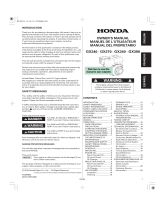 Honda Engines GX390UT2XQA2 Owner's manual
Honda Engines GX390UT2XQA2 Owner's manual
-
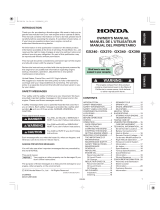 Honda Engines GX390RT2VWE Owner's manual
Honda Engines GX390RT2VWE Owner's manual
-
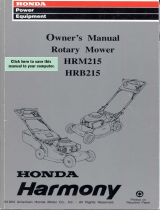 Honda Automobiles HRM215 Harmony Owner's manual
Honda Automobiles HRM215 Harmony Owner's manual
-
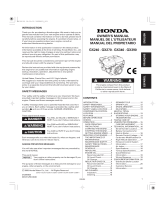 Masalta COCP2350 User manual
Masalta COCP2350 User manual
-
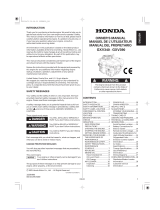 Honda Automobiles GXV390 Owner's manual
Honda Automobiles GXV390 Owner's manual
-
Poulan 193732 User manual
-
Yard Machines 410 Series User manual
-
Poulan 172782 User manual
-
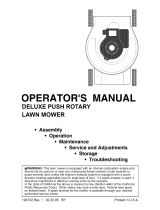 Poulan Pro 96116000201 Owner's manual
Poulan Pro 96116000201 Owner's manual
-
Yard Machines 422 Series Owner's manual






















































































